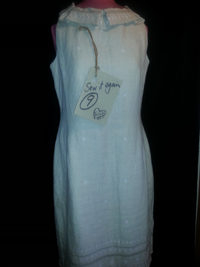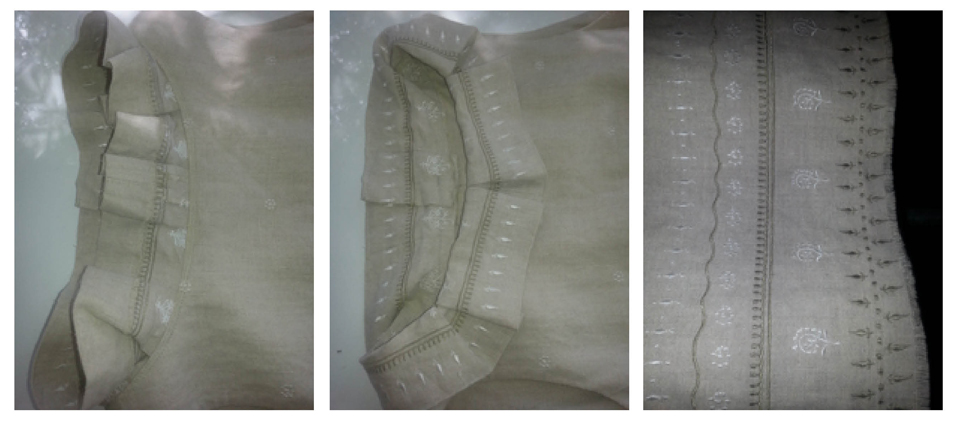 A dress length that flatters your shape is a very individual thing. Below knee is unflattering for me, which is why I cropped the bottom off this dress and turned it into a collar.
A dress length that flatters your shape is a very individual thing. Below knee is unflattering for me, which is why I cropped the bottom off this dress and turned it into a collar.
There are some amazing ideas in Eco Fashion, a book by Sass Brown which chronicles sustainability leaders and their creations, and says one of the strongest trends in fashion is the expression of ecological, social and community consciousness.
But the forward by Geoffrey B Small who first recycled menswear in a Paris collection in 1996, pulls no punches: “Fast fashion, planned obsolescence, ignorance and waste rule.”
In a scathing assessment, he writes: “Bad for the customer, bad for the worker, bad for society and bad for the environment, fashion today is one of the industrial age’s biggest human failures. Dominated by large global corporate groups and their sponsored media who encourage a dream lifestyle of selfishness, apathy, superficiality, greed, sex and drugs to a growing worldwide audience of billions, fashion has been sold to the rafters, leaving its consumers and producers poorer, dumber and more ill-equipped than ever to face, combat or survive the doomsday scenarios that everyone from religious fanatic to Nobel laureates predict will take place within a lifetime. Fashion is indeed a massive human, social and environmental disgrace in need of a paradigm shift.”
Eco Fashion, published by Lauren King Publishing in 2010, is a compelling read which provides a new definition of fashion with a new set of values and a priority to get involved and develop real and fundamental solutions to the world’s resource and lifestyle challenges.
I’m particularly interested in Brown’s chapter on recycle, reuse and redesign of garments, which is something I’ve been doing with my own wardrobe for some time.
Brown reflects on our grandparents’ ‘make-do’ culture of mending and repairing as the genesis of redesign that has moved well beyond its historic roots to make use of otherwise unwearable items of clothing by cutting, piecing and embellishing them to create entirely new garments.
“In a fast-fashion universe of low-quality throwaway clothing, redesign is the ultimate expression of slow-fashion, as each piece must be individually conceived and crafted from scratch. It has the added bonus of diverting items destined for landfill, the ultimate end for much of our discarded clothing,” Brown writes.
How much clothing do you throw away each year? Brown says the average American throws away approximately 31 kilograms of clothing and textiles per year, with about 85 per cent destined for landfills; in the UK, over 900,000 million items of clothing are discarded each year.
We need to become more conscious of our clothing footprint and take steps to minimise it. My personal solution is a wardrobe of recreated op shop finds.
Today’s offering is quick and easy. This dress is a quality linen dress but the longish style dated it. I cut off the bottom and fringe/frayed the hemline, which meant no sewing required. I then sewed the off-cut inside the neckline so that it falls over the neck to become a collar, using a few tucks to add interest and make it fit. Takes about a half-hour at most, and brings fresh life to a lovely natural fibre garment that was not being worn.
